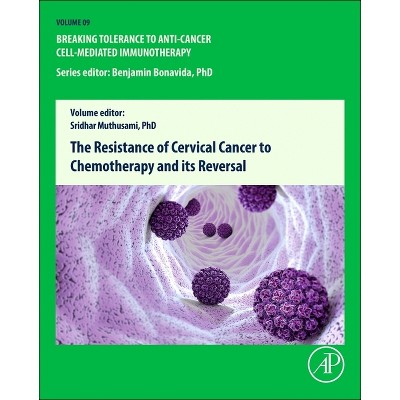Sponsored

Cyanobacterial Harmful Algal Blooms: State of the Science and Research Needs - (Advances in Experimental Medicine and Biology) by H Kenneth Hudnell
In Stock
Sponsored
About this item
Highlights
- Cyanobacteria are single-celled organisms that live in fresh, brackish, and marine water.
- Author(s): H Kenneth Hudnell
- 950 Pages
- Medical, Neuroscience
- Series Name: Advances in Experimental Medicine and Biology
Description
About the Book
"All chapters in this book are based on platform sessions or draft workgroup reports that were presented at ISOC-HAB [International Symposium on Cyanobacterial Harmful Algae Blooms]"--P. xiii.Book Synopsis
Cyanobacteria are single-celled organisms that live in fresh, brackish, and marine water. They use sunlight to make their own food. In warm, nutrient-rich environments, microscopic cyanobacteria can grow quickly, creating blooms that spread across the water's surface and may become visible. Because of the color, texture, and location of these blooms, the common name for cyanobacteria is blue-green algae. However, cyanobacteria are related more closely to bacteria than to algae. Cyanobacteria are found worldwide, from Brazil to China, Australia to the United States. In warmer climates, these organisms can grow year-round.
Scientists have called cyanobacteria the origin of plants, and have credited cyanobacteria with providing nitrogen fertilizer for rice and beans. But blooms of cyanobacteria are not always helpful. When these blooms become harmful to the environment, animals, and humans, scientists call them cyanobacterial harmful algal blooms (CyanoHABs).
Freshwater CyanoHABs can use up the oxygen and block the sunlight that other organisms need to live. They also can produce powerful toxins that affect the brain and liver of animals and humans. Because of concerns about CyanoHABs, which can grow in drinking water and recreational water, the U.S. Environmental Protection Agency (EPA) has added cyanobacteria to its Drinking Water Contaminant Candidate List. This list identifies organisms and toxins that EPA considers to be priorities for investigation.
Reports of poisonings associated with CyanoHABs date back to the late 1800s. Anecdotal evidence and data from laboratory animal research suggest that cyanobacterial toxins can cause a range of adverse human health effects, yet few studies have explored the links between CyanoHABs and human health.
Humans can be exposed to cyanobacterial toxins by drinking water that contains the toxins, swimming in water that contains high concentrations ofcyanobacterial cells, or breathing air that contains cyanobacterial cells or toxins (while watering a lawn with contaminated water, for example). Health effects associated with exposure to high concentrations of cyanobacterial toxins include:
- stomach and intestinal illness;
- trouble breathing;
- allergic responses;
- skin irritation;
- liver damage; and
- neurotoxic reactions, such as tingling fingers and toes.
Scientists are exploring the human health effects associated with long-term exposure to low levels of cyanobacterial toxins. Some studies have suggested that such exposure could be associated with chronic illnesses, such as liver cancer and digestive-system cancer.
This monograph contains the proceedings of the International Symposium on Cyanobacterial Harmful Algal Blooms held in Research Triangle Park, NC, September 6-10, 2005. The symposium was held to help meet the mandates of the Harmful Algal Bloom and Hypoxia Research and Control Act, as reauthorized and expanded in December 2004. The monograph will be presented to Congress by an interagency task force.
The monograph includes:
1) A synopsis which proposes a National Research Plan for Cyanobacteria and their Toxins;
2) Six workgroup reports that identify and prioritize research needs;
3) Twenty-five invited speaker papers that describe the state of the science;
4) Forty poster abstracts that describe novel research.

















